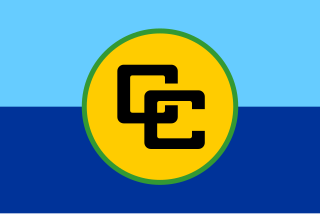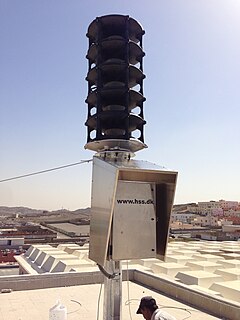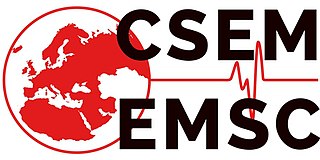Related Research Articles

The Council of Europe is an international organisation founded in the wake of World War II to uphold human rights, democracy and the rule of law in Europe. Founded in 1949, it has 46 member states, with a population of approximately 675 million; it operates with an annual budget of approximately 500 million euros.

The Federal Emergency Management Agency (FEMA) is an agency of the United States Department of Homeland Security (DHS), initially created under President Jimmy Carter by Presidential Reorganization Plan No. 3 of 1978 and implemented by two Executive Orders on April 1, 1979. The agency's primary purpose is to coordinate the response to a disaster that has occurred in the United States and that overwhelms the resources of local and state authorities. The governor of the state in which the disaster occurs must declare a state of emergency and formally request from the President that FEMA and the federal government respond to the disaster. The only exception to the state's gubernatorial declaration requirement occurs when an emergency or disaster takes place on federal property or to a federal asset—for example, the 1995 bombing of the Alfred P. Murrah Federal Building in Oklahoma City, Oklahoma, or the Space Shuttle Columbia in the 2003 return-flight disaster.
The BernConvention on the Conservation of European Wildlife and Natural Habitats, also known as the Bern Convention, is a binding international legal instrument in the field of Nature Conservation, it covers the natural heritage in Europe, as well as in some African countries. The Convention was open for signature on 19 September 1979 and came into force on 1 June 1982. It is particularly concerned about protecting natural habitats and endangered species, including migratory species.

The Caribbean Disaster Emergency Management Agency (CDEMA) is an inter-regional supportive network of independent emergency units throughout the Caribbean region. Formed on September 1, 2005 as the Caribbean Disaster Emergency Response Agency (CDERA) it underwent a name change to CDEMA in September 2009.
An office of emergency management (OEM), alternatively called an emergency management office (EMO), or an emergency management agency (EMA) in some areas, is an agency at the local, tribal, state, national or international level that holds responsibility for comprehensively planning for and responding to and recovering from all manner of disasters, whether man-made or natural. An OEM may also be requested to provide consequence management for large special events such as major gatherings, visiting dignitaries, etc.

The Directorate-General for European Civil Protection and Humanitarian Aid Operations, formerly known as the European Community Humanitarian Aid Office, is the European Commission's department for overseas humanitarian aid and for civil protection. It aims to save and preserve life, prevent and alleviate human suffering and safeguard the integrity and dignity of populations affected by natural disasters and man-made crises. Since September 2019, Janez Lenarčič is serving as Commissioner for Crisis Management in the Von der Leyen Commission.
The World Conference on Disaster Risk Reduction is a series of United Nations conferences focusing on disaster and climate risk management in the context of sustainable development. The World Conference has been convened three times, with each edition to date having been hosted by Japan: in Yokohama in 1994, in Hyogo in 2005 and in Sendai in 2015. As requested by the UN General Assembly, the United Nations Office for Disaster Risk Reduction (UNISDR) served as the coordinating body for the Second and Third UN World Conference on Disaster Reduction in 2005 and 2015.

Emergency management is the organization and management of the resources and responsibilities for dealing with all humanitarian aspects of emergencies. The aim is to prevent and reduce the harmful effects of all hazards, including disasters.

An early warning system is a warning system that can be implemented as a chain of information communication systems and comprises sensors, event detection and decision subsystems for early identification of hazards. They work together to forecast and signal disturbances that adversely affect the stability of the physical world, providing time for the response system to prepare for the adverse event and to minimize its impact.

The European Directorate for the Quality of Medicines & HealthCare (EDQM) is a Directorate of the Council of Europe that traces its origins and statutes to the Convention on the Elaboration of a European Pharmacopoeia.

Disaster risk reduction (DRR) is a systematic approach to identifying, assessing and reducing the risks of disaster. It aims to reduce socio-economic vulnerabilities to disaster as well as dealing with the environmental and other hazards that trigger them. Here it has been strongly influenced by the mass of research on vulnerability that has appeared in print since the mid-1970s as well as the mapping of natural disaster risks. Disaster risk reduction is the responsibility of development and relief agencies alike. It should be an integral part of the way such organizations do their work, not an add-on or one-off action. Disaster risk reduction is very wide-ranging: Its scope is much broader and deeper than conventional emergency management. There is potential for Disaster risk reduction initiatives in just about every sector of development and humanitarian work. Disaster risk is an indicator of poor development, so reducing disaster risk requires integrating DRR and DRM practice into the sustainable development goals. We need to manage risks, not just disasters.
The Group on Earth Observations (GEO) coordinates international efforts to build a Global Earth Observation System of Systems (GEOSS). It links existing and planned Earth observation systems and supports the development of new ones in cases of perceived gaps in the supply of environment-related information. It aims to construct a global public infrastructure for Earth observations consisting in a flexible and distributed network of systems and content providers.
Partial agreement is a term used within the Council of Europe to refer to a major activity of European cooperation that is organised by the Council of Europe but does not include all of its member states. This form of activity dates from a resolution adopted by the Council of Europe's Committee of Ministers on 2 August 1951. The resolution allowed for the adoption of agreements by a limited number of member states, without the participation of the remainder. Any expenditure would be made by the participating states alone. This form of variable geometry in intergovernmental cooperation has not been imitated by other international organisations. This form of cooperation also allows some activities to include non-European states as full-fledged participants.
The European Alert System is an earthquake warning system for member states of the Council of Europe's EUR-OPA Major Hazards Agreement.
National Institute of Disaster Management abbr. NIDM, is a premier institute for training and capacity development programs for managing natural disasters in India, on a national as well as regional basis. The National Centre of Disaster Management (NCDM), constituted under an Act of Parliament in 1995; was re-designated to give the present name of National Institute of Disaster Management (NIDM) by the Disaster Management Act 2005 passed by President of India on 9 January 2006,

The United Nations Office for Disaster Risk Reduction (UNDRR) was created in December 1999 to ensure the implementation of the International Strategy for Disaster Reduction.

The European-Mediterranean Seismological Centre (EMSC) is an international, non-governmental and not-for-profit organisation.
The Sendai Framework for Disaster Risk Reduction (2015–2030) is an international document that was adopted by the United Nations member states between 14 and 18 March 2015 at the World Conference on Disaster Risk Reduction held in Sendai, Japan, and endorsed by the UN General Assembly in June 2015. It is the successor agreement to the Hyogo Framework for Action (2005–2015), which had been the most encompassing international accord to date on disaster risk reduction.

Tropical Storm Bolaven, known in the Philippines as Tropical Storm Agaton, was an early-season tropical cyclone that affected southern parts of the Philippines in January 2018. The first named storm of the 2018 Pacific typhoon season, Bolaven formed as a tropical depression near Palau on December 29, 2017. The system moved generally westwards without intensifying and made landfall over northeastern Mindanao on January 1, 2018. The depression spent the next day traversing the Philippines, making four more landfalls in the Visayas and one in Palawan. The system strengthened into a tropical storm on January 3 as it entered the South China Sea, receiving the name Bolaven. However, Bolaven weakened back to a tropical depression just a day later amid a marginal environment and dissipated on January 4 east of Vietnam.

Safety signs are a type of sign designed to warn of hazards, indicate mandatory actions or required use of Personal protective equipment, prohibit actions or objects, identify the location of firefighting or safety equipment, or marking of exit routes.
References
- ↑ http://conventions.coe.int/Treaty/EN/PartialAgr/Html/Europa8702.htm Resolution (87) 2
- ↑ "European and Mediterranean Major Hazards Agreement".
- ↑ http://www.coe.int/t/dg4/majorhazards/alertes/default_en.asp European Warning System
- ↑ "Partial Agreements".
- ↑ "Document not found - Council of Europe".
- ↑ "European and Mediterranean Major Hazards Agreement".
- ↑ Zschau, Jochen (2003). Early Warning Systems for Natural Disaster Reduction: With 79 Tables ; EWC '98 ; [this Volume is the Result of the International IDNDR-Conference on Early Warning Systems for the Reduction of Natural Disasters, Held at the Geo-Forschungszentrum in Potsdam, Germany from 7-11 September 1998.]. ISBN 9783540679622.